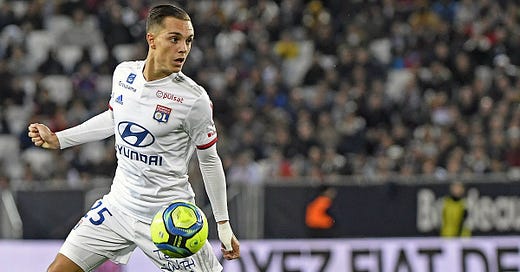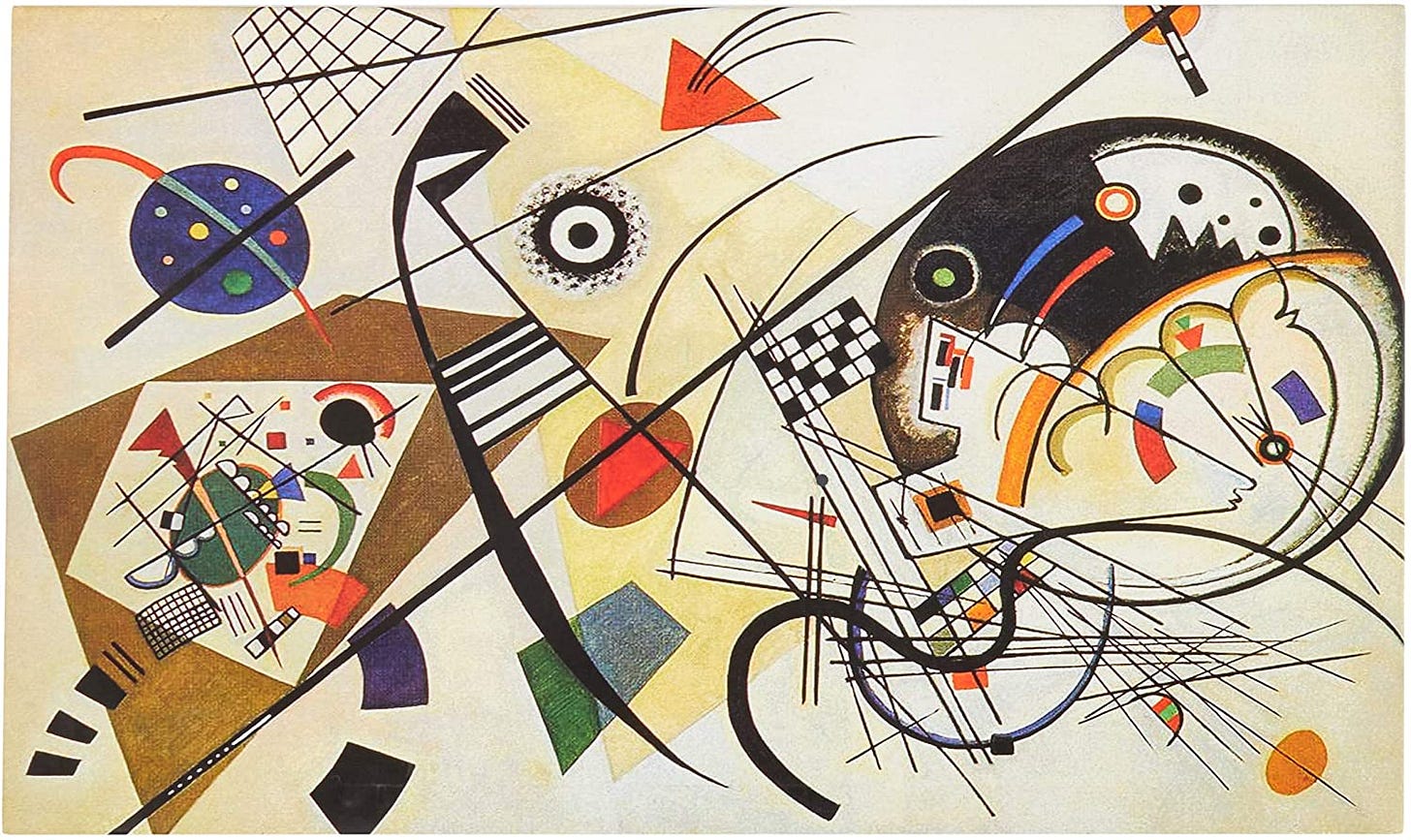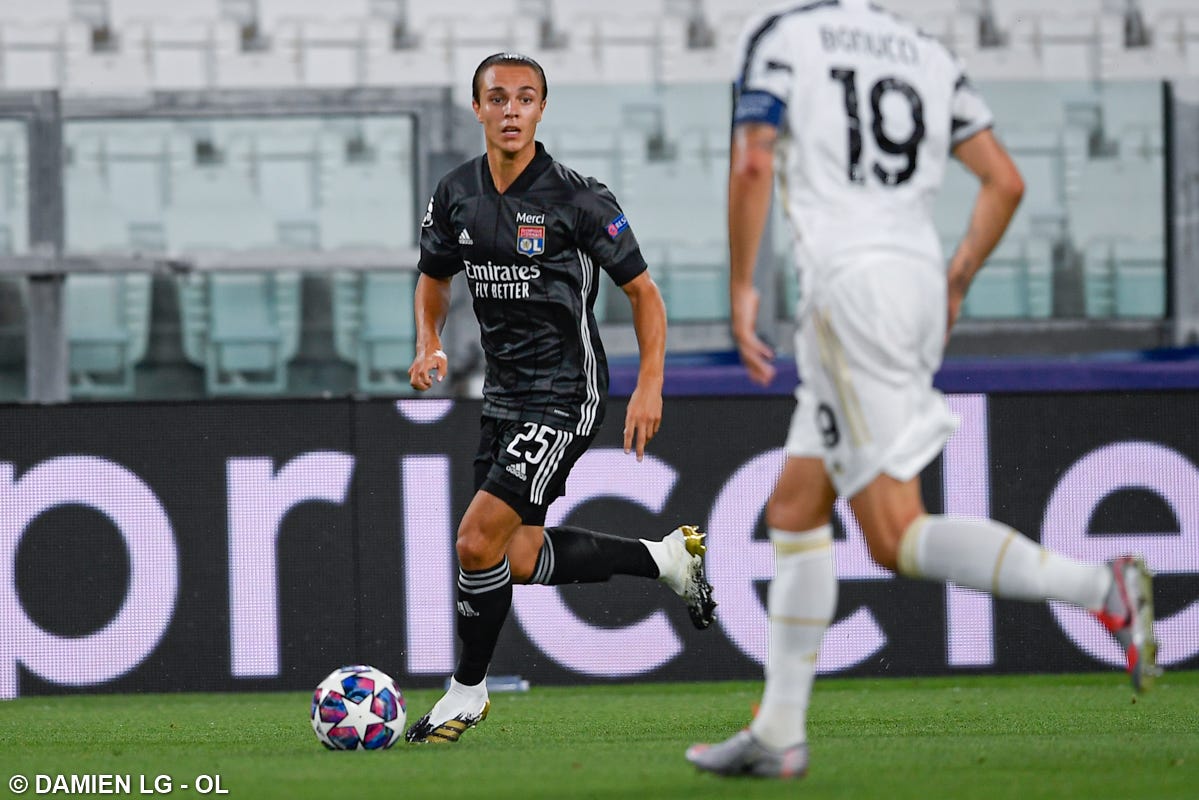The player that your club needs: Maxence Caqueret
Why Maxence Caqueret is a player to keep an eye on for every European club.
One of the most stereotyped, overworn, and overused statements we hear is “art is subjective”. Despite the banal nature of this statement, the truth remains. In the footballing world, we often see players’ playing style being described as artistic. May it be Pirlo’s passes into the final third from the bottom of midfield, or Iniesta’s and Laudrup’s croquetas, or Thiago’s effortless movement exuding ginga, it is indeed art in my opinion.
While Thiago Alcantara may be the fluidity shown in a de Kooning, Maxence Caqueret is the geometric, structure-within-chaos beauty of a Kandinsky.
You would be hard-pressed to find a better introduction to the player Maxence Caqueret is than this excerpt from The Athletic’s Jack Lang’s piece on him.
Perhaps the fastest route to understanding what makes Maxence Caqueret tick is to find out his favourite video game.
Simple, addictive, throw-your-Game-Boy-out-the-window-in-frustration Tetris.
It is tempting to view this as wilful nostalgia from someone whose prohibition-era haircut suggests he’s not averse to that kind of thing. But think about it for a second and it starts to make perfect sense.
A restless, driving rhythm; a patchwork of interlocking shapes, rearranged on the fly; the joy of escaping certain doom with only wit and dexterity as your weapons. This is Tetris in all its geometric glory, but it is also Caqueret’s game. All he needs is a chiptune soundtrack.
Born in the province of Venissieux, near Lyon, Maxence started out in the Lyon academy at the age of 11. Always one of the brightest players, he consistently progressed through the youth ranks and is now a first-team player. What immediately stands out when you watch him play is his ability to do essentially everything. He is everywhere on the pitch, propelling the attack forwards, pressing the opposition mercilessly and back to defend in an instant.
Gliding across the field, the Frenchman’s grace deceives spectators. The delicate manner in which he caresses the ball plays well-weighted passes, swivels away from challenges might make one think that this midfielder who weighs just 63kg and is 174cm tall isn’t one to get his hands dirty. This couldn’t be farther from the truth.
"He's one of the so-called top players", says Jean-François Vulliez, director of the OL Academy, speaking to RMC Sport. "As early as U12 or U13, his playing intelligence, his concentration, and the offensive and defensive intensity he put into the matches ... There are very few players capable of doing that today."
As Vulliez points out, he has the kind of intensity we see in few players. This intensity is somewhat deceptive. He does play with a very high defensive as well as offensive work-rate, but more impressive is the fact that he manages to sustain it throughout the 90. Against Juventus in the UEFA Champions League, Caqueret covered the most distance with 14km. His former U17 coach, Armando Garrido refers to him as a “machine”. The extra dimension such energy provides to the team is apparent, especially to a team that looks to attack.
The visualization below shows just how impressive Caqueret is in terms of intensity, thinking of it as a proxy for pressing. At 20 years of age, the boy from Venissieux is among the best in Ligue 1.
Caqueret has been deployed either as one of the double-pivots in Rudi Garcia’s side, but most recently he has operated as the right central-midfielder in a 4-3-3. More than once, the opposition would have the ball in the other midfield channel and Caqueret would, after evaluating the situation, sprint to the other side, dispossess the player, and start the counter-attack. In midfield, Caqueret does best when he has a pivot behind him.
The full range of his passing ability is visible when playing as an interior. Being a technically sound player, the usual quick one-twos, incisive passes, and piercing through-balls are routine. Caqueret’s passing is versatile and his accuracy, among the best. The following visualization shows interesting points.
Firstly, Caqueret is above average in short, medium, and long passes. You won’t find him among the league leaders in any of these statistics, but he’s certainly one of the very few to do well in all three types. Secondly, his pass completion % is above average. This is more impressive when you consider that this viz includes only midfielders that have played more than seven 90s. In a broader sample in terms of playtime and positions, his position is bound to be more impressive. And last, we see that Maxence is among the best in his league in terms of the number of passes received—something that shows that his teammates rely on him.
Meandering into the topic of reliance, this is something often overlooked. Just how reliable a player is, makes a huge difference when we think about it. The protagonist within the team, the trust of the manager in him, the consistency it entails, all these factors are not thought of often. But these are the things that propel a player to the very top.
The following is a quote from Cyrill Dolce, one of the coaches in Lyon’s youth academy, that perfectly captures the fact that Maxence is very influential in the dressing room, is respected by his teammates and his coaches.
"When I see him arriving in U15, I say to myself: it's strange to put a young, rather discreet youngster in the captain's chair, but we're going to try him anyway"
“In the end, it's the aura he gives off, without talking, that makes him captain. We often want captains who shout loudly. He doesn't. His exemplary nature makes others follow him"
Caqueret is a metronomic midfielder. He keeps the team ticking. His teammates are geometric pieces to be conducted in Tetris, and Maxence is addicted to the game. The 20-year-old always looks to progress the play, but never mindlessly. When the team needs stability, he will pass the ball laterally or backward.
“He's a metronome, the catalyst for vertical play, the catalyst when you have to put your foot on the ball" “His first project is to make the team better. He was like that at a very young age and he hasn't changed." "He's a silky aggressive", continues his former coach, Dolce, when talking to RMC.
According to @goalanalysis’s player-similarity model, Maxence was found to be most similar to Saul Niguez, Konrad Laimer, Mikel Merino among others. Though the similarities are clear, there is something unique about Caqueret and that is the invaluable balance of quality and quantity that he brings. The reason why I titled this piece “the player that your club needs” is because most teams would benefit a lot from having a player like him in their squad.
If a team has a problem with progressing the ball forwards, this Frenchman has shown he can contribute to it with 2426m covered in 474 attempted passes. Some teams have problems in getting players back in time to defend and maintain that for the full 90. Caqueret covered 14km against the Italian champions and didn’t stop running for the full 90, and it wasn’t a one-off. There are many more examples, but the point has been made—Maxence Caqueret will be a player that will contribute significantly to most European teams, especially considering the transitional nature of today’s football.
All the visualizations are thanks to Soumyajit Bose.
Further reading:
https://www.reddit.com/r/OlympiqueLyonnais/comments/i9n3jf/maxence_caqueret_programmed_to_shine/
https://theathletic.co.uk/1991571/2020/08/15/maxence-caqueret-lyon-champions-league-manchester-city/
https://www.theguardian.com/football/2020/aug/10/lyon-maxence-caqueret-juventus-champions-league
If you enjoyed this article or have feedback, consider leaving a comment here.








